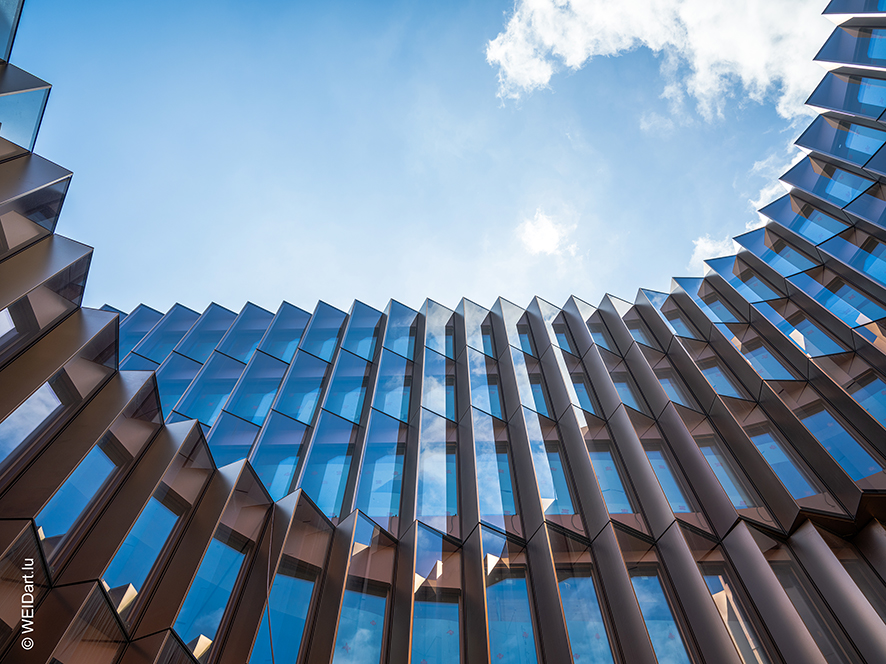Super Spacer proves essential for sustainable architecture


Mike Moran, Edgetech’s vice president of sales (Europe & UK), explains how Edgetech’s warm edge technology has delivered outstanding energy performance without compromising design in two groundbreaking Danish developments.
When it comes to sustainable building design, there’s no one-size-fits-all solution – but there are essential components that consistently deliver results.
Edgetech’s Super Spacer warm edge technology has proven this point in two of renowned Danish architect Bjarke Ingels Group (BIG)’s most ambitious recent projects, demonstrating how advanced spacer technology can support both energy efficiency and architectural innovation.
The projects – BIG’s striking headquarters in Copenhagen’s sustainable Nordhavn district and the impressive Skypark Business Centre at Luxembourg Airport – showcase dramatically different architectural approaches yet share common ground in their commitment to sustainability and their use of Super Spacer insulating glass spacers to achieve outstanding thermal performance.
Sustainability in Copenhagen
BIG’s new 27m concrete headquarters in the redeveloped port district of Nordhavn, Copenhagen, initially faced rejection from Copenhagen city planners who deemed it unsuitable for the green showcase city, which aims to be carbon neutral by 2050.
Yet, closer inspection reveals the high-performance components making this a sustainable construction project.
The project features approximately 500 insulating glass units up to 2.8m high, achieving impressive performance figures with a façade U-value of 0.18 W/(m²K) and glazing Ug value of 0.6 W/(m²K). Danish glazing specialists Glaseksperten A/S selected Super Spacer T-Spacer Premium Plus as the warm edge solution for the triple-glazed units.
Production efficiency was a key consideration for this project. Super Spacer’s flexible, metal-free composition simplified installation and reduced manual labour requirements, while its structural flexibility allowed for extremely precise fitting that reduces stress on the glass.
Super Spacer also contributes to the energy efficiency and durability of the end product by improving thermal performance and minimising condensation.
Innovation in Luxembourg
At Luxembourg’s Findel Airport, BIG took a completely different material approach with Skypark Business Centre South. The 365m long structure features one of Europe’s largest timber constructions, with a sophisticated double-glazed façade system designed to manage heat, noise and glare from the adjacent airfield.
The project presented unique challenges for glass processor Finiglas, which manufactured over 160 curved triple-glazed units, each weighing more than 1,300 kilograms.
For these demanding units, Finiglas specified 16mm Super Spacer TriSeal Flex Black from Edgetech. The enhanced strength characteristics proved crucial for maintaining precise positioning during the complex assembly process involving five individual panes, each weighing up to 600 kilograms.
Wind and climatic loads will work hard in a 16mm gap between the second and third panes. This is where a spacer made of structural silicone foam really demonstrates its value through flexibility and 100% resilience. The elastic silicone material maintains edge seal integrity, guaranteeing both energy efficiency and durability.
Both projects highlight Super Spacer’s dual advantages in production efficiency and long-term performance. The flexible warm edge technology streamlines manufacturing processes while delivering thermal performance that supports ambitious sustainability targets.
These projects demonstrate that sustainable building isn’t about choosing between performance and design ambition. With the right components, architects can pursue bold designs while meeting increasingly stringent energy efficiency requirements. Super Spacer technology provides the thermal performance foundation that makes this possible and is ideal for the kind of high-specification glazing demanded by today’s leading architects.
As the building industry faces mounting pressure to reduce carbon emissions, sustainability with design innovation these projects prove that environmental responsibility and architectural excellence can go hand in hand.
